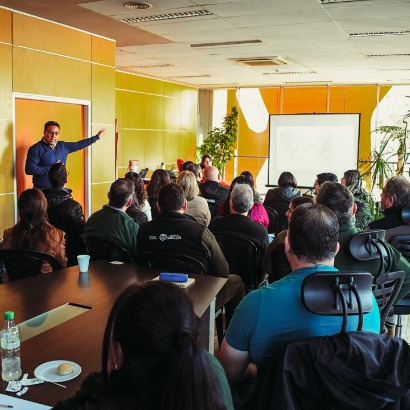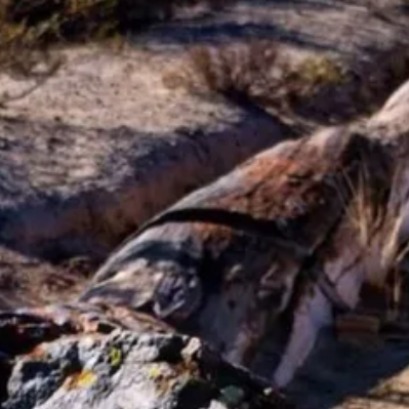
Successful training on technical and professional guidelines of native forests
The first meeting was intended for the body of inspectors, biodiversity technicians, workers from protected natural areas, fire and fauna care, environmental education technicians, drivers and technicians of the Sustainable Development Sub -Directorate
The formative space had the main objective of improving the institutional response to deforestation, articulating common knowledge, resources and practices for a more effective and coordinated management of the native forest. In the same way, the technical and legal tools for the care and protection of our natural environment were addressed. We are facing a context that challenges us to act with commitment, knowledge and planning. Forests are not only biodiversity reserves, but also sources of life, culture, identity and livelihood for our communities. Therefore, we believe it is essential to obtain technical and legal tools to achieve teams trained capable of identifying criteria for the implementation of the law, said the Sustainable Development Deputy Director, Daniela Montalvini, in the opening of the formation. The management of native forests focuses on the management and sustainable use in search of balancing the conservation of biodiversity and the provision of goods and services with the needs of the communities that inhabit the needs of the communities. For this, it is important to plan, monitor and evaluate human interventions in forest ecosystems to achieve specific objectives related to environmental conservation, economy and society. Through this space, we seek that participants acquire practical tools for the recognition of native forest, the identification of different types of interventions and the appropriate record in inspection acts. Likewise, basic knowledge about georeferencing, use of GPS, navigation applications such as Google Earth, interpretation of satellite images and vector files (such as KMZ) will be provided, together with fundamental theoretical concepts for the interpretation of coordinates. All this in order to consolidate a more effective, coordinated and technically solid institutional response against the problem of deforestation, the exhibitors pointed out.
IT MAY INTEREST YOU
 Experts cant believe it, but this tree is the oldest in the world and continues to bear fruit: it is 4,000 years old.
Experts cant believe it, but this tree is the oldest in the world and continues to bear fruit: it is 4,000 years old.
Nature keeps secrets that defy the passage of time, and one of the most surprising examples is a tree that, approximately 4,000 years old, continues to bear fruit today. This specimen has become a symbol of resistance and longevity, capable of surviving climate changes, landscape transformations and human activity itself.
 Missions | New illegal felling in the Piñalito Provincial Park in San Pedro reveals the silent expansion of deforestation in protected areas
Missions | New illegal felling in the Piñalito Provincial Park in San Pedro reveals the silent expansion of deforestation in protected areas
The advance of deforestation on protected areas was once again evident this week in the Piñalito Sur Provincial Park, in San Pedro, where the Ministry of Ecology and Renewable Natural Resources confirmed a new case of selective illegal logging. The event occurs in a context of growing concern about the fragility of the environmental control system in rural and border areas, where the scarcity of resources, personnel and logistics limits the capacity of surveillance against criminal organizations organized to steal native woods and market them on the black market in connivance with sawmill owners.
 The forest of the oldest shadows: the story of the petrified trees
The forest of the oldest shadows: the story of the petrified trees
One of the natural treasures of Río Negro turns 23 years old under the protection law that allows its conservation. Where it is and how it was formed. Río Negro celebrates 23 years of conservation in the petrified forest as a Protected Natural Area (ANP). It is a space of 625 hectares that protects an exceptional site of fossil trunks that date back more than 60 million years.





















